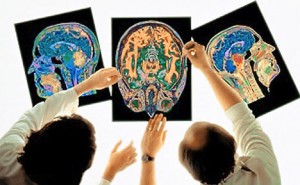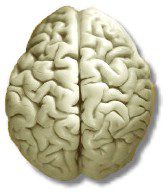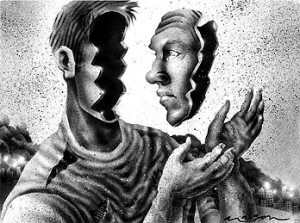Originally posted 2011-05-05 02:00:09.
Hypnosis is mysterious and peculiar. It is not fully understood. Some therapists are taught a very diluted version of hypnosis and they market themselves with statements about hypnosis that are not true. They are true to the techniques they use, but not to hypnosis. Here are six common misconceptions about hypnosis and their relevance to effective change work. Some are encouraged by practicing therapists and some are just urban legends.
Hypnosis is a sleep like state
Hypnosis gets its name from the Greek God of sleep, Hypnos, which is misleading. Relaxation and sleep are two very common suggestions used in the induction process. The relaxed state you often see in hypnotised people is the acceptance of a suggestion, but it is not hypnosis. It is the effect not the cause.
In a stage show you will see the subjects slumped when the hypnotist is not using them, they look like they are asleep, puppets with their strings cut, yet as soon as the puppeteer gives them an instruction they jump to it – you do not do that when you are asleep. When they are doing what they are told as part of the performance – eating an onion or falling in love with a mop – in the reality that the hypnotist has given them they are in they still hypnotised and they are very definitely not asleep.
In therapy the client will spend a lot of time with their eyes closed in a relaxed state as in therapy the attention is turned inwards and so it makes sense to block out external stimulus, but they are not asleep, they are following instructions given to them by the hypnotist, rearranging their subconscious patterns and changing their lives.
A good therapist will ensure some sort of two way communication between themselves and the client so they can gauge the effectiveness of what they are doing as they go. This might involve talking with the client, asking for head nods or shakes or establishing Ideo Motor Responses which are tiny involuntary muscle movements – one for Yes and one for No. You cannot do that with someone who is asleep.
The most common phrase from a clients mouth when you wake them up is something along the lines of ‘that was weird’ – probably not the first phrase uttered each morning.
The Hypnotist cannot make you do anything you do not want to do!
Many hypnotherapists will claim this on their FAQ pages, they will tell you that you are completely in control throughout the session as many hypnotherapy schools teach this. Any therapist that claims this is not using hypnosis or they do not understand the tools of their own trade. Hypnosis is the acceptance of suggestion without question, without reservation, without inhibition and that is exactly why you go to hypnotist rather than a counsellor or psychotherapist which work with your conscious faculty at the pace you wish to go to try and get past problems – hypnosis removes your conscious critical faculty from the equation to get you fast results.
Let’s examine the term ‘want’. Let’s say you get a panic attack every time you are in a small enclosed space. You want to stop doing that but you can’t. If you really truly wanted to stop you would. So why is it not possible? Because there is a deeper want – part of your mind wants to keep you out of small enclosed spaces. Part of your mind, the part that is in charge, does not want to go into small enclosed spaces. Go and see a hypnotist though, and they can talk to that part of your mind and tell it that you will be okay if you go into small enclosed spaces without panicking. And you will feel fine after that. The hypnotist has made you do something that you do not want to do.
The same goes for any issue that you might want to see a hypnotist for – the process aligns your conscious desires with your subconscious resistance so there is no conflict.
It is a wonderful process that can do wonderful things for you but be sure you trust your hypnotist and chose them carefully.
Hypnosis is a completely natural state which you drift in and out of several times a day
For hypnosis to happen you need a hypnotist and a hypnotee. The thing that makes hypnosis hypnosis is the acceptance of the hypnotist’s suggestion without reservation, without inhibition. This cannot happen regularly throughout the day unless you are joined at the hip of a hypnotist who barks suggestions at you regularly.
Trance is often mistaken for hypnosis. Daydreaming is a form of trance. Autopilot that you slip into while driving a familiar root is a form of trance. Watching TV is a form of trance. Hypnosis is a form of trance, but trance is not hypnosis, not without a hypnotist there to drive it.
Hypnosis is when a hypnotist encourages your subconscious to become dominant over your conscious mind which is important because your subconscious can do anything, it does not know its limits, whereas your conscious mind has limits and it knows exactly where they are.
The hypnotist does not do anything to you, they just encourage the subconscious to come out and play, using your imagination and focus while persuading the conscious mind to sit back for a while. This does not happen several times a day. In a session with a good hypnotist you will have a new and different, weird and wonderful experience.
You can hypnotize yourself
Following the above logic, you cannot hypnotise yourself. You cannot bypass your own conscious faculty. You cannot stick your own finger to the end of your own nose without glue but a hypnotist can. It is very hard to consciously change a subconscious belief once it is formed as your conscious mind is a result of that belief – this is a bit like trying to pick yourself up off the floor. You need someone else to bypass that conscious mind for you.
Self hypnosis can be good to focus your attention, your energy and your self awareness, it can be good to really think about how you are seeing the world and to find new ways of seeing it, but it is not hypnosis – it is self-induced trance or meditation and it can do you the world of good, but it will not be as fast as hypnosis and is not the same thing.
Only the weak minded can be hypnotized
This misconception was quite possibly started by bad hypnotists who just wanted people to comply. It is not true. Hypnosis is more of a talent of the hypnotee than the hypnotist, it is a skill to be able to take someone else’s words as your own reality. It is a skill that some people have naturally, others can learn to be better at it and some people will never be able to do it. So what determines how good a hypnotee you are?
In a study by J. E. Horton et al entitled ‘Increased anterior corpus callosum size associated positively with hypnotizability and the ability to control pain’, he discovers that someone’s ability to be hypnotised depends on the size of the rostrum which is part of the brain within the corpus callosum which links the left and right hemispheres, the rational and creative parts of the brain. The bigger the rostrum the better a hypnotee you are; if your rostrum is small it may be that you cannot be hypnotized.
The best way to find out how hypnotizable you are is to spend some time with a hypnotist and try some things and this would be wise to do before investing a full amount in treatment. Do some tests and you have an idea how likely it is to work and a good hypnotist will give you the opportunity to find this out as this determines if and how they are going to be help you.
The other things that may get in the way on the day are: mood, rapport with the hypnotist, setting, things going on in your life and choice of inductions to name but a few, but a good hypnotist will work with you to get past these variables and if you can be hypnotised, you will be.
You can get stuck in hypnosis
If the stage hypnotist dies in the middle of the show, will you live the rest of your life in love with a mop? If the therapist walks out in the middle of a session and never comes back will you never ‘wake up’?
To take the therapy scenario first, your subconscious is bright, it is in control of so much all the time, it will realise that the hypnotist is gone and allow you to either fall into a comfortable sleep or ‘wake you up’ of its own accord.
In terms of your showbiz love affair with a mop, you may stay in love with the mop for a while, but your mind can still learn and there is more evidence that the mop is not actually a person worthy of your love than there is to the contrary and so you will process this and fall out of love quite quickly.
This is why the hypnotist needs to be clever in therapy as the effects in the session need to last. The suggestions that are designed to effect the rest of your life must be put in a way that will remain congruent with the way you experience life or the work that is done in the session will be undone over time. The change needs to be made and then your subconscious prepared for potential challenging times ahead so that it can run the new pattern even when the going gets tough rather than reverting habitually to the old pattern. The therapist cannot stop life from happening, but they can give you the tools to cope with whatever is thrown at you.













